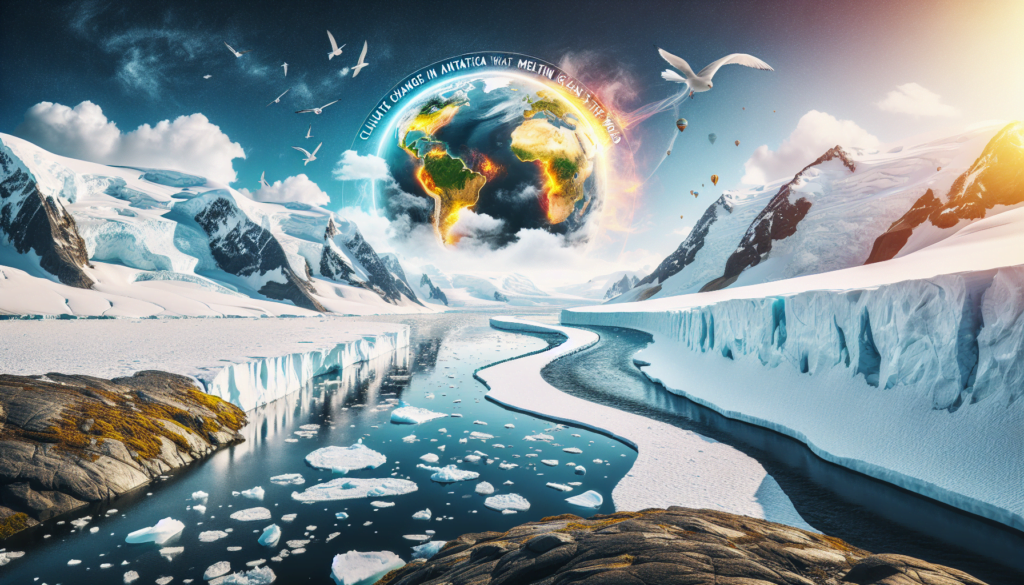Contents
Antarctica, the frozen desert at the southernmost tip of our planet, has long been a subject of fascination and scientific inquiry. Beyond its stunning beauty and extreme conditions, Antarctica is a crucial barometer for global climate health. The drastic changes occurring in this icy wilderness due to climate change have profound implications not only for the continent itself but for the entire world.
The Cryosphere’s Canary in the Coal Mine
Antarctica holds around 60% of the world’s fresh water locked in its ice sheets. The continent’s ice loss has accelerated over recent decades, with the most significant impact seen in the West Antarctic Ice Sheet. According to NASA and European Space Agency studies, Antarctica has been losing about 252 gigatonnes of ice annually between 2009 and 2017, a sharp increase from previous years.
Rising Sea Levels: The Global Threat
One of the most immediate and far-reaching impacts of melting Antarctic ice is sea-level rise. As ice sheets and glaciers deteriorate, they contribute directly to increasing ocean levels. Projections suggest that if the entire West Antarctic Ice Sheet were to collapse, it could lead to nearly 10 feet of additional sea-level rise. Even a fraction of this scenario would have catastrophic effects on coastal cities, displacing millions and causing unprecedented economic disruptions.
Ocean Currents and Climate Patterns
Antarctica plays a crucial role in regulating global ocean currents through the formation of dense, cold water that sinks and drives the thermohaline circulation. This ‘global conveyor belt’ helps distribute heat across the planet. The infusion of fresh water from melting ice disrupts these patterns, potentially weakening ocean currents. Such changes could lead to more extreme weather patterns, including harsher winters in some regions and intensified hurricanes in others.
Biodiversity and Ecosystem Impact
The Antarctic ecosystem, despite its harsh conditions, is home to a unique array of species, from microscopic phytoplankton to colossal blue whales. Melting ice and changing temperatures disrupt these ecosystems, leading to shifts in species distributions and the potential collapse of certain populations. For example, krill, a cornerstone species in the Antarctic food web, depend on ice-covered waters for their lifecycle. A decline in krill populations could reverberate up the food chain, affecting seals, penguins, and even the great whales.
Global Policy and International Cooperation
Addressing climate change in Antarctica requires unprecedented global cooperation. The Antarctic Treaty System, which governs international relations regarding the continent, is a vital framework, but it must be strengthened to incorporate climate change mitigation. Nations must collaborate to reduce carbon emissions that fuel the warming of our planet and protect vulnerable regions like Antarctica.
Technological and Scientific Endeavors
Investment in scientific research and technological innovation is essential to combat the adverse effects of climate change on Antarctica. Remote sensing technologies, ice-penetrating radar, and autonomous underwater vehicles are just some of the tools scientists employ to monitor and understand changes in the Antarctic environment. Data gathered from these technologies is indispensable for building accurate climate models and informing policy decisions.
Conclusion: A Call to Action
The changes occurring in Antarctica are not isolated; they are intrinsically linked to the health of our planet. The melting ice serves as a stark warning, urging humanity to take decisive action. Mitigating climate change requires reducing greenhouse gas emissions, investing in renewable energy, and fostering international cooperation to protect vital ecosystems.
In conclusion, what happens in Antarctica does not stay in Antarctica. The continent’s fate is a sobering reminder of the interconnectedness of our global climate systems. Immediate and sustained action is necessary to ensure a stable and sustainable future for all.

